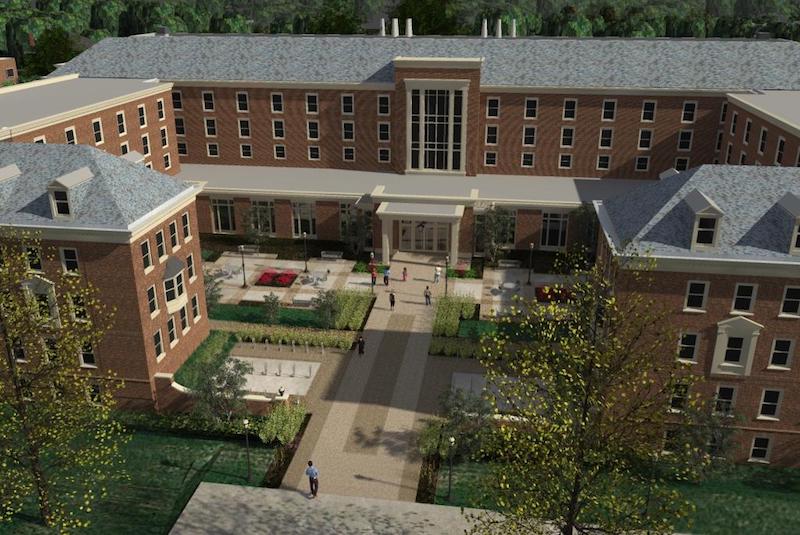Originally built in stages between 1928 and 1932, the University of Minnesota’s Pioneer Hall became an outdated facility that did not meet building codes, wasn’t handicap accessible, and was lacking in many comforts students wanted.
The facility had narrow corridors, no air conditioning, limited study space, and an underground dining area. After debating for years whether to renovate the building or completely knock it down and build a new one, the university decided on a $104.5 million renovation/addition project spearheaded by KWK Architects partnered with architecture/engineering firm-of-record TKDA.
The project retains the character-defining features of the original building while expanding the building footprint to improve housing and dining programs. The new housing component increases the number of beds to 756 and incorporate study and community spaces to enhance the experience of first-year students.
See Also: AIA and the University of Minnesota partner to develop Guides for Equitable Practice
The new dining space will be moved from its underground location and brought up to grade level. Seating capacity, meal, serving, and seating options will all be expanded. The new facility will be able to accommodate 850 students at any time.
The renovation also rectifies one of the biggest shortcomings of the original building by providing for full ADA accessibility. New meditation rooms and lounges will also be created.
Once completed, Pioneer Hall will comprise 257,000 sf, which includes 85,600 sf of renovated space and 171,400 sf of new construction. The renovated Pioneer Hall is slated to be open in time for fall semester 2019.
Related Stories
| Oct 17, 2011
Clery Act report reveals community colleges lacking integrated mass notification systems
“Detailed Analysis of U.S. College and University Annual Clery Act Reports” study now available.
| Oct 14, 2011
University of New Mexico Science & Math Learning Center attains LEED for Schools Gold
Van H. Gilbert architects enhances sustainability credentials.
| Oct 12, 2011
Bulley & Andrews celebrates 120 years of construction
The family-owned and operated general contractor attributes this significant milestone to the strong foundation built decades ago on honesty, integrity, and service in construction.
| Sep 30, 2011
Design your own floor program
Program allows users to choose from a variety of flooring and line accent colors to create unique floor designs to complement any athletic facility.
| Sep 23, 2011
Okanagan College sets sights on Living Buildings Challenge
The Living Building Challenge requires projects to meet a stringent list of qualifications, including net-zero energy and water consumption, and address critical environmental, social and economic factors.
| Sep 14, 2011
Research shows large gap in safety focus
82% of public, private and 2-year specialized colleges and universities believe they are not very effective at managing safe and secure openings or identities.
| Sep 7, 2011
KSS Architects wins AIA NJ design award
The project was one of three to win the award in the category of Architectural/Non-Residential.
| May 18, 2011
Major Trends in University Residence Halls
They’re not ‘dorms’ anymore. Today’s collegiate housing facilities are lively, state-of-the-art, and green—and a growing sector for Building Teams to explore.
| May 18, 2011
Raphael Viñoly’s serpentine-shaped building snakes up San Francisco hillside
The hillside location for the Ray and Dagmar Dolby Regeneration Medicine building at the University of California, San Francisco, presented a challenge to the Building Team of Raphael Viñoly, SmithGroup, DPR Construction, and Forell/Elsesser Engineers. The 660-foot-long serpentine-shaped building sits on a structural framework 40 to 70 feet off the ground to accommodate the hillside’s steep 60-degree slope.
















